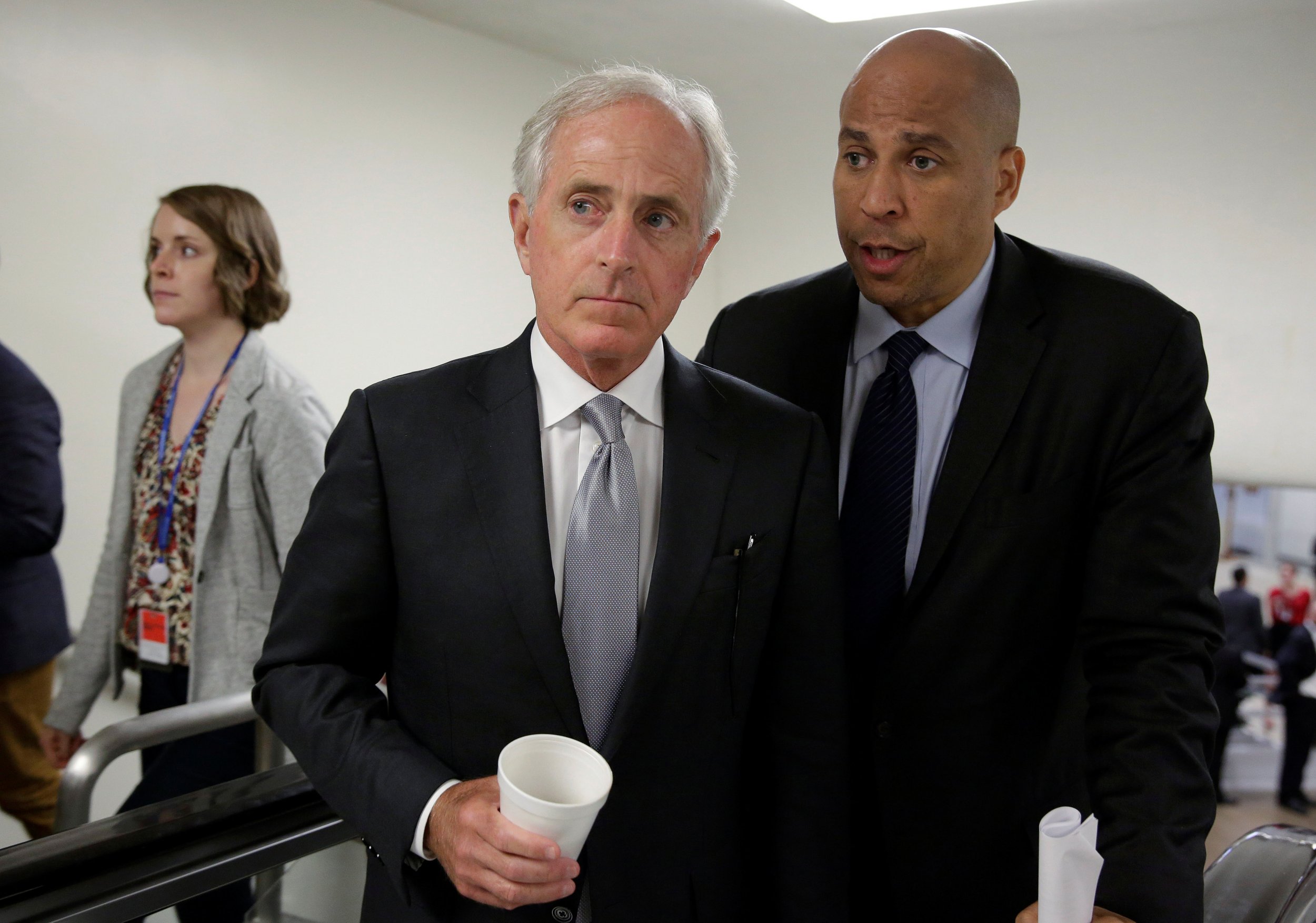
The annual budgetary process is riddled with infighting, unimaginably large amounts of money and a 147-page glossary of convoluted budget-speak.
Let's skip all of that for now. Here's what you need to know about the federal budget.
Why should I care about this?
The House voted 216-212 to approve the Senate's version of the 2018 budget resolution Thursday. The process of creating an annual budget is confusing, convoluted and possibly even outdated, but it's incredibly important.
Lawmakers use the federal budget to establish their spending priorities and determine how they'll pay for them. These decisions impact the economy at large and the everyday lives of Americans. Constituents should be able to understand if their leaders are helping them or screwing them over.
OK, got it. So how does it all work?
The process typically begins with the president's budget proposal, a general overview of how the White House would like to see money allocated. Congress takes this into consideration when it drafts its own policy.
This year, the Trump administration released its budget in May. This version of the budget included substantial cuts to Medicaid, Social Security's disability program, the federal student loan program and welfare programs, like food stamps. The budget increased funding for defense spending, infrastructure and veterans health programs.
Trump's budget also included a tax policy that he assumed would grow the economy by about 3 percent, or $2 trillion each year. Most economists said that was unrealistic.
Big news - Budget just passed!
— Donald J. Trump (@realDonaldTrump) October 26, 2017
I thought this was all about Congress and Senate
That's the next step. Congress and Senate each prepare budgets that will serve as the framework for spending, revenues, deficits and debt. These resolutions provide spending limits but are not law, and unlike the president's budget, they don't include funding for specific programs.
On October 19, the Senate passed a $4 trillion spending limit. That's about one-fifth of the entire U.S. economy.
On Thursday, members of the House agreed to pass the Senate approved budget plan.
This particular bill allows Republicans to pass a tax cut that would add up to $1.5 trillion to the deficit through a process called reconciliation, which allows the Senate to pass a bill with only 51 votes.
Budget passed the House! This is a critical step towards delivering substantial tax relief that hardworking Americans deserve. #TaxReform 🇺🇸
— Ivanka Trump (@IvankaTrump) October 26, 2017
What is reconciliation?
Reconciliation cannot be used without the prior adoption of a budget resolution, which is why the Republican-controlled Congress accepted the Senate budget plan so quickly. The GOP wants to fast-track its tax reform.
Congressional Republicans really, really want to pass tax reform. They want it so badly that they are willing to ignore many of their previously expressed budgetary concerns. House Republicans were "asked to vote for a budget that nobody believes in so that we have the chance to vote for a tax bill that nobody's read," said Representative Matt Gaetz (R-Fla.).
"This is the biggest hoax hatched upon the American people ever, that this budget process even exists. The only thing about this that matters is preparation for tax reform," added Senator Bob Corker (R-Tenn).
The budget Republicans just passed cuts Medicaid & Medicare by $1.5 trillion to give a trillion-dollar tax break to the top 1%.
— Kamala Harris (@SenKamalaHarris) October 26, 2017
Those are some strong words. What's in this budget, anyway?
The approved budget will cut health programs like Obamacare and Medicaid by $1.3 trillion, or 30 percent over the next decade. Medicare also gets a haircut to the tune of $473 billion.
"Income Security" spending, which includes welfare programs like food stamps and the earned income tax credit, will lose $653 billion. Another $800 billion will be cut from the non-defense discretionary spending category, which includes just about everything the government does that isn't military-related or an entitlement program.
The budget assumes there will be another $1 trillion saved over 10 years in "unspecified allowances." That means unidentified future cuts to mandatory spending programs.
Finally, the budget imagines that tax cuts will increase economic growth to 2.6 percent each year, nearly a full percent higher than the 1.8 percent that the Congressional Budget Office estimates.
The House just passed the budget. On to tax reform.
— Steve Scalise (@SteveScalise) October 26, 2017
Can Democrats still fight this?
Kind of. None of this is legally binding and it will likely come up for debate over the coming weeks in a long, very partisan process.
The budget appropriations committees in the House and Senate finish the budget process by splitting into 12 subcommittees. These committees cover areas like military spending, agriculture and education and hold hearings to decide how exactly to allocate their funds. They create an appropriations bill that outlines their budget which goes to the Senate or House floor for a vote.
The bills are reconciled between the Houses and sent for a final vote. Eventually, the bill is sent to President Trump's desk for approval. Once President Trump signs all 12 bills, the process is complete. Usually just in time for it to begin again.
Uncommon Knowledge
Newsweek is committed to challenging conventional wisdom and finding connections in the search for common ground.
Newsweek is committed to challenging conventional wisdom and finding connections in the search for common ground.
About the writer
Nicole Goodkind is a political reporter with a focus on Congress. She previously worked as a reporter for Yahoo Finance, ... Read more





